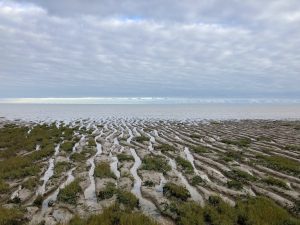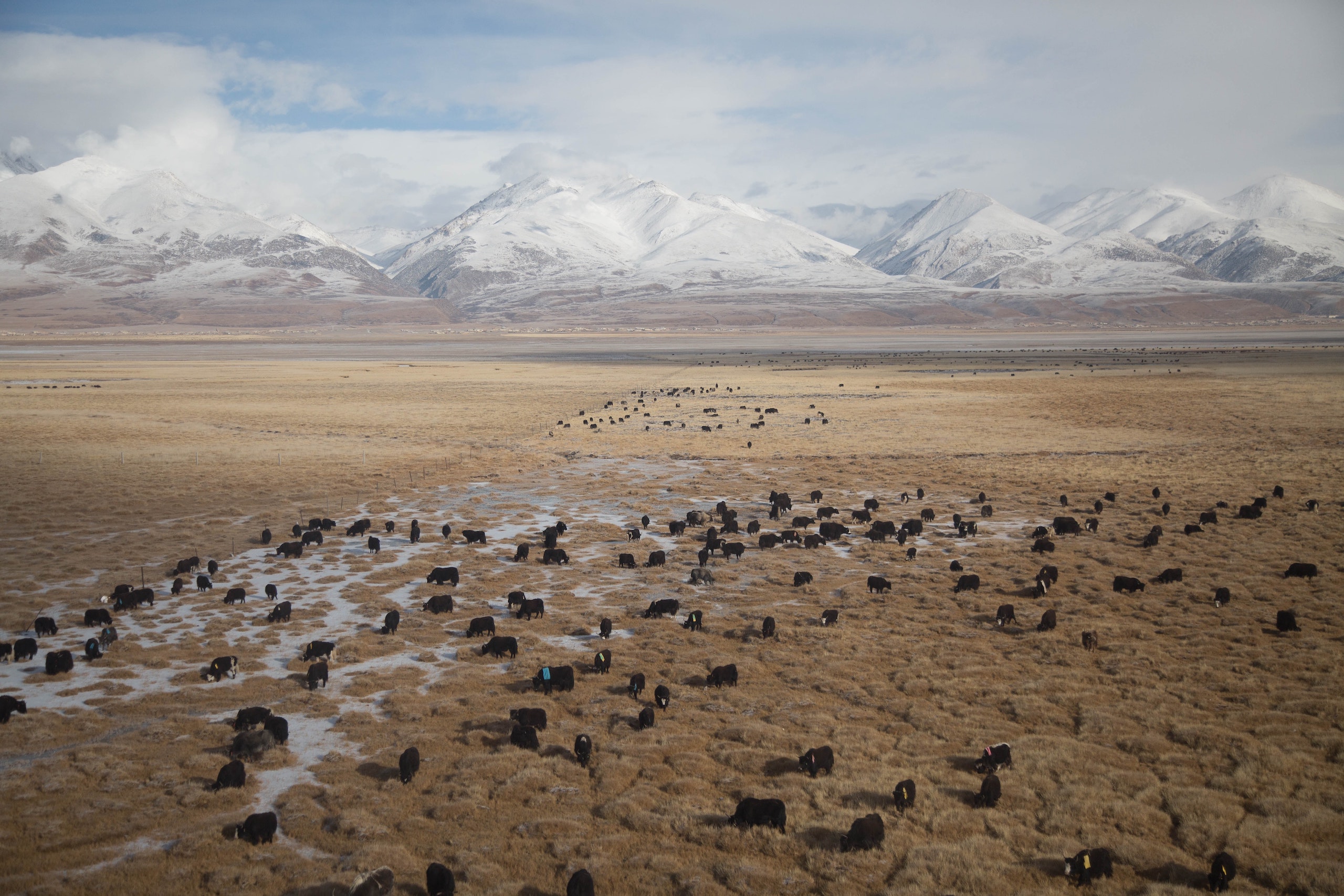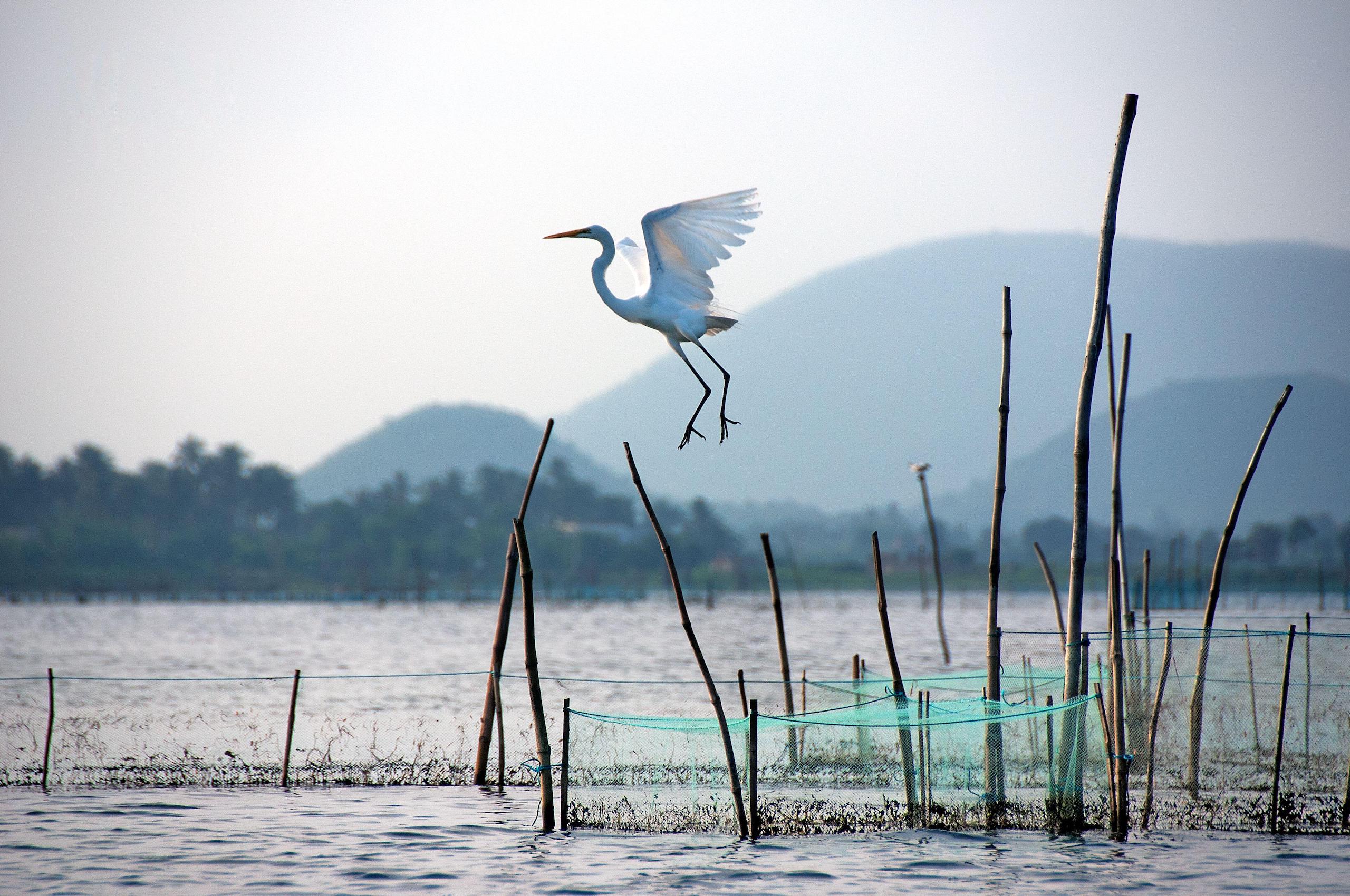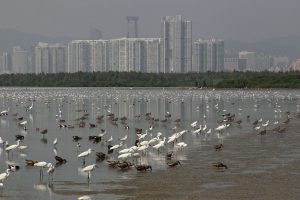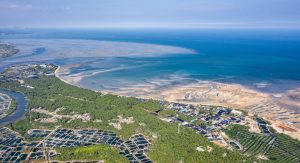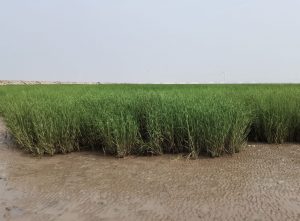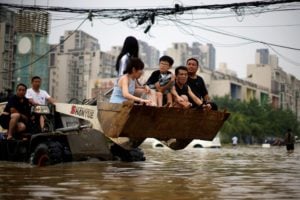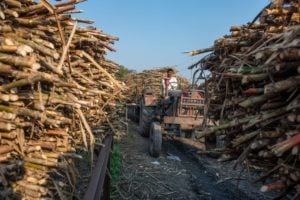Wetlands have long suffered from an image problem. Various descriptors such as bog, swamp, marsh and mudflat do not conjure glamorous locations. Oceans and rainforests tend to grab the conservation headlines.
“People don’t understand them, or they’re seen as wastelands, rather than something to cherish,” says Richard Hearn, international policy and advocacy manager at the Wildfowl and Wetlands Trust (WWT), a UK-based conservation body.
“Also, the conservation community probably hasn’t banged the drum hard enough for wetlands in the past,” he adds.
However, a concerted push by advocates resulted in their recognition in targets set by the new global biodiversity framework, agreed at UN biodiversity talks in Montreal in December. Governments have now pledged to ensure that by 2030, 30% of degraded wetlands are under effective restoration and 30% of wetlands are protected.
Their importance for minimising and adapting to climate change has also been recognised in UN climate texts, as well as the Sendai Framework for Disaster Risk Reduction, and the UN Sustainable Development Goals. Peatlands, for example, which form half of the world’s wetlands, store twice as much carbon dioxide as all of its forests. Wetlands can also absorb excess rainfall and tidal surges.
Under threat
The rising awareness of these ecosystems, which include salt marshes, mudflats, rivers, mangroves and lakes, could not come soon enough. They cover around 1.6 billion hectares, according to the latest global assessment by the Ramsar Convention on Wetlands. That is about 3% of the planet’s surface, yet they are home to 40% of its species, according to the IUCN.
They store almost one-third of global soil carbon. And they support the livelihoods of over one billion people through activities such as fishing and rice farming, according to conservation NGO Wetlands International.
35%
of wetland ecosystems have been lost since 1970
But wetlands are in trouble. Around 35% of wetland ecosystems have been lost since 1970, buried under development, drained for agriculture, or, in the case of peatlands, dug up and used for fuel or compost, according to Ramsar’s global assessment.
Pollution from multiple sources, including microplastics, runoff from fertilisers, antibiotics, and chemicals, is a newer but rising threat. “The pollution that we see in our wetlands is becoming more and more complex. There’s a deadly cocktail of elements in these waters,” according to Dr Ritesh Kumar, director of Wetlands International South Asia.
Meanwhile, climate change is leading to a net loss of wetland area as a result of drying, desertification and coastal erosion. Ocean acidification and rising sea surface temperatures are exacerbating existing threats, the assessment states.
WWF’s latest Living Planet Index estimated that around 25% of all wetland species are at threat of extinction, with an even higher proportion for freshwater biodiversity, at 83%.
Countries can put a site under protection, but there is not a very robust method for following upElisabeth Bernhardt, coordinator for the Global Adaptation Network at UNEP
“We’re losing these water bodies faster than other ecosystems, and we’re losing the biodiversity even faster,” says Elisabeth Bernhardt, coordinator for the Global Adaptation Network at the UN Environment Programme (UNEP).
Wetlands are unique among ecosystem types in that they have their own convention. Ramsar was established in 1971 to drive more sustainable use. Countries signing up to the treaty – which now number 172 – are obliged to put forward at least one wetland to the Ramsar network, a designation that commits them to maintain its ecological condition.
There are currently over 2,400 Ramsar sites around the world. They cover over 250 million hectares, an area larger than Mexico. However, the designation is no guarantee. Ramsar’s own report states that half of its sites are being damaged by agriculture.
One example of poor management is the Donaña national park in southern Spain, which is not only a Ramsar site but also a World Heritage site, UNESCO Biosphere Reserve, and EU Special Protection Area.
Despite these designations, scientists have warned that the park, whose marshlands, dunes and lagoons are used by many threatened migratory bird species, is facing a “death sentence” from unregulated groundwater pumping by farms producing strawberries and blueberries year-round in huge greenhouses. While the Spanish government has opposed the water extraction, the regional government of Andalucía has approved its legalisation.
Bernhardt points to the voluntary nature of the Ramsar commitments. “Countries can put a site under protection, but there is not a very robust method for following up… I don’t think that Ramsar has capacity at the moment to really measure and monitor the implementation of commitments.”
Specific targets for wetlands under the Global Biodiversity Framework, Sustainable Development Goals and national climate commitments can help fill this hole, she says.
Ramsar also lacks its own financial mechanisms, leaving countries to use their own funds, points out Kumar. “There have been around 350 resolutions and recommendations taken in the last 14 Ramsar meetings. Implementation for all that cannot come from national budgets,” he says.
However, commentators praise the convention for keeping wetlands on the international agenda. “The biggest leverage for getting wetlands in the Global Biodiversity Framework was having a resolution from Ramsar asking parties to consider wetlands systematically,” Kumar said.
New approach
Now that wetlands have increased status in UN environment agreements, countries will need to work out how best to implement their protection and restoration.
There is scope to expand the list of those designated under Ramsar to meet the target to protect 30% of wetlands, according to Hearn. “Ramsar has its own criteria for identification of internationally important wetlands, so it may be that some wetlands don’t meet those and need to be protected in other ways, but getting as many as possible designated under Ramsar would be beneficial.”
He cautions that some degraded wetlands are already protected, so it is vital to avoid creating more “paper parks”, where there is no proper management or enforcement on the ground.
Given the depletion of wetlands worldwide, the restoration target may be more important than that for protection, he says.
Kumar notes a growing need for wetland restoration to help climate mitigation and adaptation, which lies outside conventional conservation circles, and believes this will require a different approach.
“It will not be just about doing restoration for species conservation, but about doing restoration with an endpoint in sectoral outcomes, such as reduced disaster risk, better carbon stocking, and better climate adaptation,” he says.
To achieve this, better governance will be essential, he says. “The science part is easy, the ecology is very robust. But we need to clear up decision-making systems to make them inclusive. There are people depending on the wetlands in most of the landscapes that I work in, so the development context needs to be taken into account.”
Kumar gives Chilika Lake, a coastal lagoon on the east coast of India, as a restoration example. It was declared dead in the 1990s after losing its connection to the sea. Around 20 years ago, Wetlands International started working with the government to restore the sea link. Irrawaddy dolphins increased from around 20 to 150 and seagrass beds have increased six-fold to 12,000 hectares.
Chilika’s restoration has also increased fisheries catch by around six times, benefitting the livelihoods of around two million people. An economic analysis found that every rupee the government spent on restoration resulted in at least seven rupees of benefits to fisheries, tourism and carbon capture, according to Kumar.
Political buy-in was vital to the success of this restoration project, he says. “When the chief minister says in a meeting that Chilika is his asset, and a societal asset, and no nonsense will be allowed, the rest of it is solved,” he says.
This new context for wetland restoration could also expand sources of finance. UNEP is advocating for wetlands to receive more funding for nature-based solutions for both climate adaptation and mitigation.
“When we crack that nut, and really understand the carbon storage potential of wetlands, and how we cannot afford to lose them, or let them dry up, I think we’ll see that push,” says Bernhardt.
